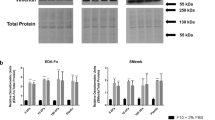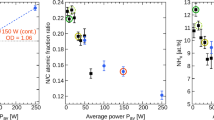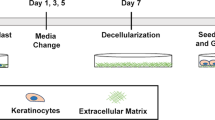Abstract
PROLIFERATION in diploid fibroblasts is limited to cells that are attached and spread on a substrate. The attachment and spreading activities of normal cells are enhanced in the presence of media conditioned by the growth of diploid fibroblasts1,2, and a cell surface protein (LETS/CSP)3 extracted from normal cells enhances the attachment of transformed cells4,5. We report here that the activities present in conditioned medium are due to several high molecular weight glycoproteins (‘released proteins’). In addition, we find that the same activities can be extracted (‘extracted proteins’) from the surfaces of whole cells. The results establish that growth related biological activities are transferred intercellularly through the release and absorption of cell surface components.
This is a preview of subscription content, access via your institution
Access options
Subscribe to this journal
Receive 51 print issues and online access
$199.00 per year
only $3.90 per issue
Buy this article
- Purchase on Springer Link
- Instant access to full article PDF
Prices may be subject to local taxes which are calculated during checkout
Similar content being viewed by others
References
Millis, A. J. T., Hoyle, M. & Field, B. J. Cell Physiol. 93, 17–24 (1977).
Moore, E. J. Cell Biol. 70, 634–647 (1976).
Hynes, R. Biochem. biophys. Acta 458, 73–107 (1976).
Yamada, K. M., Yamada, S. S. & Pastan, I. Proc. natn. Acad. Sci. U.S.A. 73, 1217–1221 (1976).
Unnisa, I., Mautner, V., Lanza, R. & Hynes, R. Cell 11, 115–126 (1977).
Lowry, O., Rosebrough, N. J., Farr, A. L. & Randall, R. J. J. biol. Chem. 193, 265–275 (1951).
Ashwell, G. Meth. Enzym. 8, 85–95 (1966).
Kennel, S. J., DelVillano, B. C. & Lerner, R. A. Meth. molec. biol. 6, 1–38 (1973).
Singer, S. J. & Nicolson, G. Science 175, 720–721 (1972).
Eagle, H. & Piez, K. J. exp. Med. 116, 29–43 (1962).
Yamada, K. M., Yamada, S. S. & Pastran, I. Proc. natn. Acad. Sci. U.S.A. 72, 3158–3162 (1975).
Doljanski, F. & Kapeller, M. J. theor. Biol. 62, 253–270 (1976).
Schubert, D. Expl Cell Res. 102, 329–340 (1976).
Rouslahti, E. & Vaheri, A. Nature 248, 789–781 (1974).
Yamada, K. M. & Weston, J. A. Proc. natn. Acad. Sci. U.S.A. 71, 3492–3496 (1974).
Laemmli, U. Nature 227, 680–685 (1970).
Taylor, A. C. Expl Cell Res. Suppl. 8, 154–173 (1961).
Author information
Authors and Affiliations
Rights and permissions
About this article
Cite this article
MILLIS, A., HOYLE, M. Fibroblast-conditioned medium contains cell surface proteins required for cell attachment and spreading. Nature 271, 668–669 (1978). https://doi.org/10.1038/271668a0
Received:
Accepted:
Issue Date:
DOI: https://doi.org/10.1038/271668a0
This article is cited by
-
Routine heat inactivation of serum reduces its capacity to promote cell attachment
In Vitro Cellular & Developmental Biology (1987)
-
Differential effects of soluble and immobilized fibronectins on aortic endothelial cell proliferation and attachment
In Vitro Cellular & Developmental Biology (1987)
-
Glycosaminoglycan synthesis by embryonic fibroblasts is age-dependent and modulated by environmental factors
Experientia (1982)
-
Fibronectins—adhesive glycoproteins of cell surface and blood
Nature (1978)
Comments
By submitting a comment you agree to abide by our Terms and Community Guidelines. If you find something abusive or that does not comply with our terms or guidelines please flag it as inappropriate.



